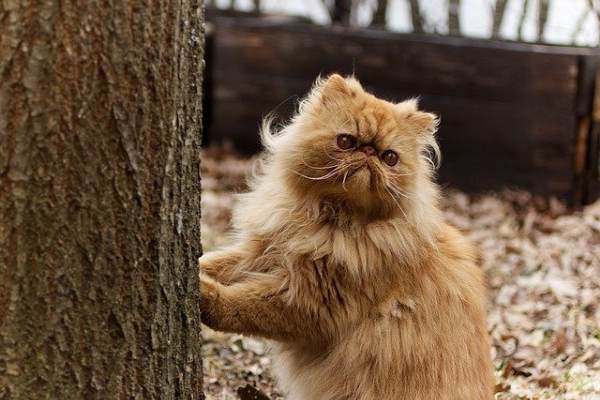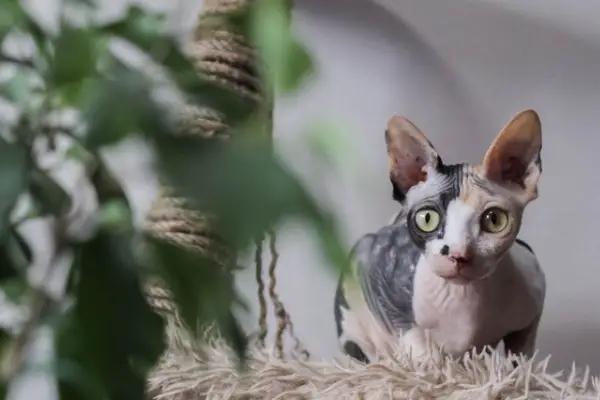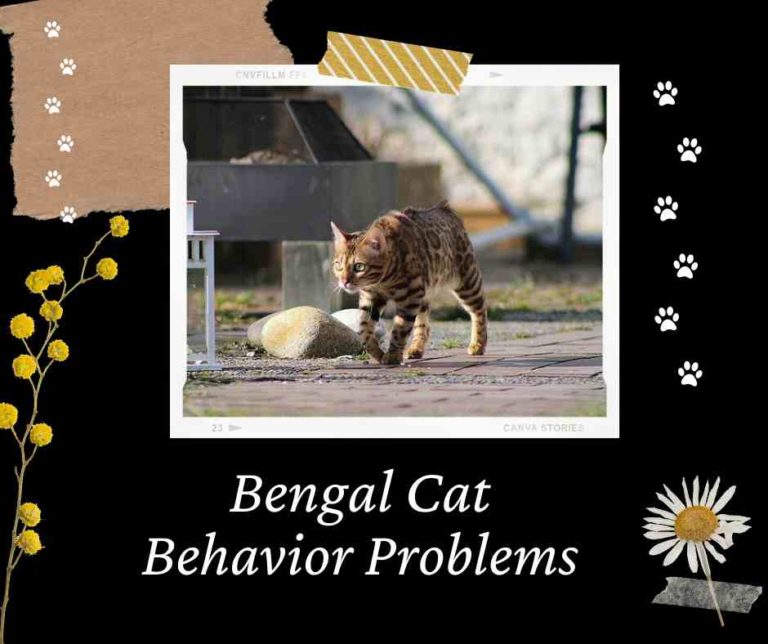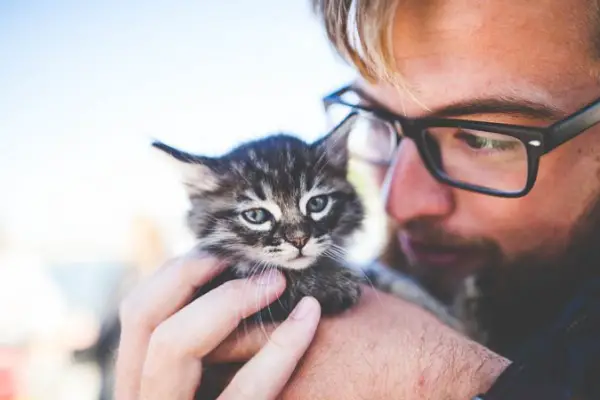Do Mainecoon Cats Get Along With Other Cats: 6 Benefits & More

Cat lovers always ask do Mainecoon cats get along with other cats, this is very possible due to the sweet personalities of Mainecoons.
Mainecoon cats are known for their large size, long hair, and affectionate personalities.
They are perfect for people who love big cats that are easy to take care of, with lots of pros and cons.
Mainecoon’s can be good with dogs and other house pets.
They love attention and will often seek it out by purring or rubbing against their human companions.
So if you’re the only pet owner in your household, consider adopting two Mainecoon cats instead of one!
Find out 15 awesome reasons why Mainecoons are good pets!
Do Mainecoon Cats Get Along With Other Cats
Mainecoon cats have a calm, docile, and sociable demeanor.
Furthermore, because they naturally love the company of other animals, their laid-back demeanor and very social dispositions make them perfect for living with other cats.
So you’ve recently purchased a new Mainecoon kitten and are looking forward to bringing him home.
You already have cats, though, and you’re worried about what will happen when they meet for the first time.
Or you already have a Mainecoon cat and want to get a second cat, you can use this method.
This section of the post will go through how to introduce felines to one another feline appropriately.
Find out more about letting your Mainecoon cat go outside, the pros and cons!
How to introduce a new cat to a Mainecoon
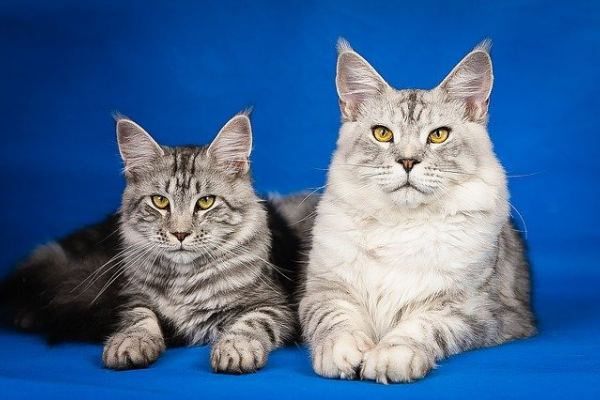
Getting two litter mate Mainecoons from the kitten stage and allowing them to grow together and become the greatest of friends is the ideal method to give your Mainecoon cat a companion cat.
Because kittens are too tiny to fight for territory, they only fight for food. The approach described here applies to adult cats, not kittens.
Adult cats, on the other hand, are always fighting to defend their territory, which may be a problem for both the cat owner and the cats.
What you’ll need before taking a new cat home:
- Second cat bed
- Second feeding can or plate
- More interactive toys
- A crate
- A second water can
- A second room or a basement
- A second litter box
Read more about: Are Mainecoon Cats Aggressive (12 Aggressive Triggers & Prevention).
Step 1: Prepare your home for a new cat’s arrival
Before you consider taking in a new cat, you should first arrange a separate room or your basement as a temporary home for the cat.
You can’t have two cats in the same room, no matter how well-socialized you believe your cat is.
You should also bear in mind that Mainecoons are naturally territorial, therefore you need a second room.
Here are some general guidelines to keep in mind:
- Sweep all corners to ensure they’re free of debris.
- Create a little hiding area for your cat in the same room.
- Putting the litter box in a convenient spot.
- For the new cat, clean water should be provided.
- Keep a cat bed next to the hideaway you’ve created.
- Examine whether the room can be locked.
After you’ve accomplished all of the above procedures, go out and get your new cat, as well as a carrier that fits the cat’s size.
Step 2: Time to bring the new cat home
To avoid a surprise assault, limit your resident Mainecoon cat’s limitations before bringing the new cat down from the car or whatever mode of transportation you utilized.
Make sure your Mainecoon cat does not have access to the new cat, regardless of how well you believe your Mainecoon cat has been socialized.
Mainecoons are excellent hunters with strong innate hunting instincts, and they will attack to defend their territory.
Place the new cat in his or her own room so that he or she may investigate the new surroundings.
Allow time for him or her to adjust to their new environment, and check in on them 3–4 times a day to see how they’re doing.
Ascertain that he or she has all they need and schedule a formal introduction once they have settled into their new home.
How will you know when the new cat is ready to be introduced?
As soon as you arrive, he or she gets brave and quits hiding.
Allow him or her to move at his or her own pace during this procedure.
Take your time since meeting your cat will take confidence and guts on his or her part.
Step 3: Preparing for the first time introduction of both cat
Before making any introductions, make sure the resident cat has run out of energy.
It’s simple: play fetch with your cat for 5 to 10 minutes.
Bring the new cat into the house gradually, monitoring for responses, once your cat is sleepy and quiet.
This introduction will not take a specific number of days; it may take longer than planned depending on the personalities of the cats.
Allow your cat to explore the new cat after it has gotten near to it, but be careful of any unexpected assaults.
To avert a deadly attack, keep your cat on a leash if at all feasible.
Give both cats treats while simultaneously cuddling them with separate hands.
Before returning the Mainecoon cat to his or her chamber, give him or her time to explore the new cat.
Step 4: Second time face to face meeting of both cats
The next day, put your Mainecoon cat in a crate or put him on a leash and take him on a walk around the home, enabling him to explore the entire building.
When he or she is finished, take him or her to investigate your cat, but this time remove the Mainecoon cat from his or her crate or leash.
Give both cats food and a new interactive toy to examine, such as an electric fish.
Because everything is new, the new cat may or may not attack depending on its disposition, so give your Mainecoon cat additional attention.
Once they’ve finished, return the new cat to his or her room.
Step 5: Take your Mainecoon cat to visit the new cat’s room
Bring your Mainecoon cat into his or her room this time to meet the new cat. Provide food and hugs before you go.
Allow both cats to interact with one another and swap toys, as well as receive gifts and play games on a regular basis.
Take your Mainecoon cat to his or her room after the game.
At this stage, you should have determined whether the Mainecoon cat is ready to accept the new cat.
Step 6: Allowing both cats to investigate each other
Introduce the new cat when both cats are ready, but never leave them alone.
Keep litter boxes, food plates, and water cans separate for the first several weeks.
Over time, the two cats will become great friends and keep an eye on each other.
Don’t rush through the operation and take your time.
The most important thing to keep in mind is that, despite intensive socialization, your Mainecoon cat may have trouble accepting another cat that does not reside with him or her.
Mainecoon cats, on the other hand, frequently seek the aid of other cats to overcome their behavioral issues.
Best breeds of cat that gets along with Mainecoon cats
- Mainecoon
- Ragdoll
- Birman
- Siamese cat
- Abyssinian cat
- Persian cat
- Siberian cat
Read more about the benefits of Mainecoon grooming and the steps involved!
Benefits of getting another cat for a Mainecoon cat
Here are some reasons why you should get a second cat for your Mainecoon cat:
Getting a second cat to improve bonding
Because Mainecoon cats, unlike most other cats, are not inherently social, you’ll have to work with them to help them get along with other pets.
Introducing a second cat into your Mainecoon cat’s life can help them become more social and less aggressive to other animals.
The Mainecoon benefits from bonding with a second cat because it helps the Mainecoon develop a stronger relationship with its owners and family.
Getting a second cat help to prevent separation anxiety issues
Separation anxiety arises when you leave your Mainecoon cat at home or unsupervised for long periods of time.
With the presence of a companion cat and intriguing toys, separation anxiety can be reduced or eliminated.
The main benefit of having a second cat for your Mainecoon cat is to prevent undesirable behavior.
On the other hand, both cats should be introduced as kittens so that they can grow up together and become wonderful companions.
Getting a second cat help prevent loneliness and boredom
Loneliness and boredom cause Mainecoon cats to become sad, aggressive, and engage in inappropriate behavior.
Mainecoons are known to claw and bite violently when they feel lonely.
Buying a second cat, rather than just toys, is one solution to the problem of Mainecoons loneliness.
In contrast, interactive toys with a second cat relieve 75 percent of your Mainecoon cat’s loneliness and boredom.
Getting a second cat help cats avoid depression
When they have another cat to keep them occupied all day, Mainecoon cats are rarely unhappy.
Sadness is the root of most unwanted behaviors in cats, and separation anxiety will most likely lead to unneeded depression.
As a result, you’ll need to get a second Mainecoon cat. Maine cats can become violent due to a number of factors, including sadness.
Getting a Second cat help Mainecoons get extra needed exercises
It’s important to remember that Mainecoon cats are quite active and energetic, and they require stimulation to avoid being depressed.
If you adopt a second cat, you’ll be able to ensure that your Mainecoon cat gets enough exercise while you’re gone.
Mainecoon cats like to run about and play, so having a second cat will make things easier for you and your cat.
Bonding with your Mainecoon cat will help them become more sociable and enhance their connections with other members of the household.
Mainecoon becomes more loving with everyone in the house as you and your second cat spend more time with him.
I hope your question do Mainecoon cats get along with other cats was answered!!!
Find out the causes of excessive shedding in Mainecoons and how to control it!

![Do Cats Need To Go Outside [Pros & Cons] Do Cats Need To Go Outside](https://petcreeks.com/wp-content/uploads/2021/08/Do-Cats-Need-To-Go-Outside-768x644.jpg)
